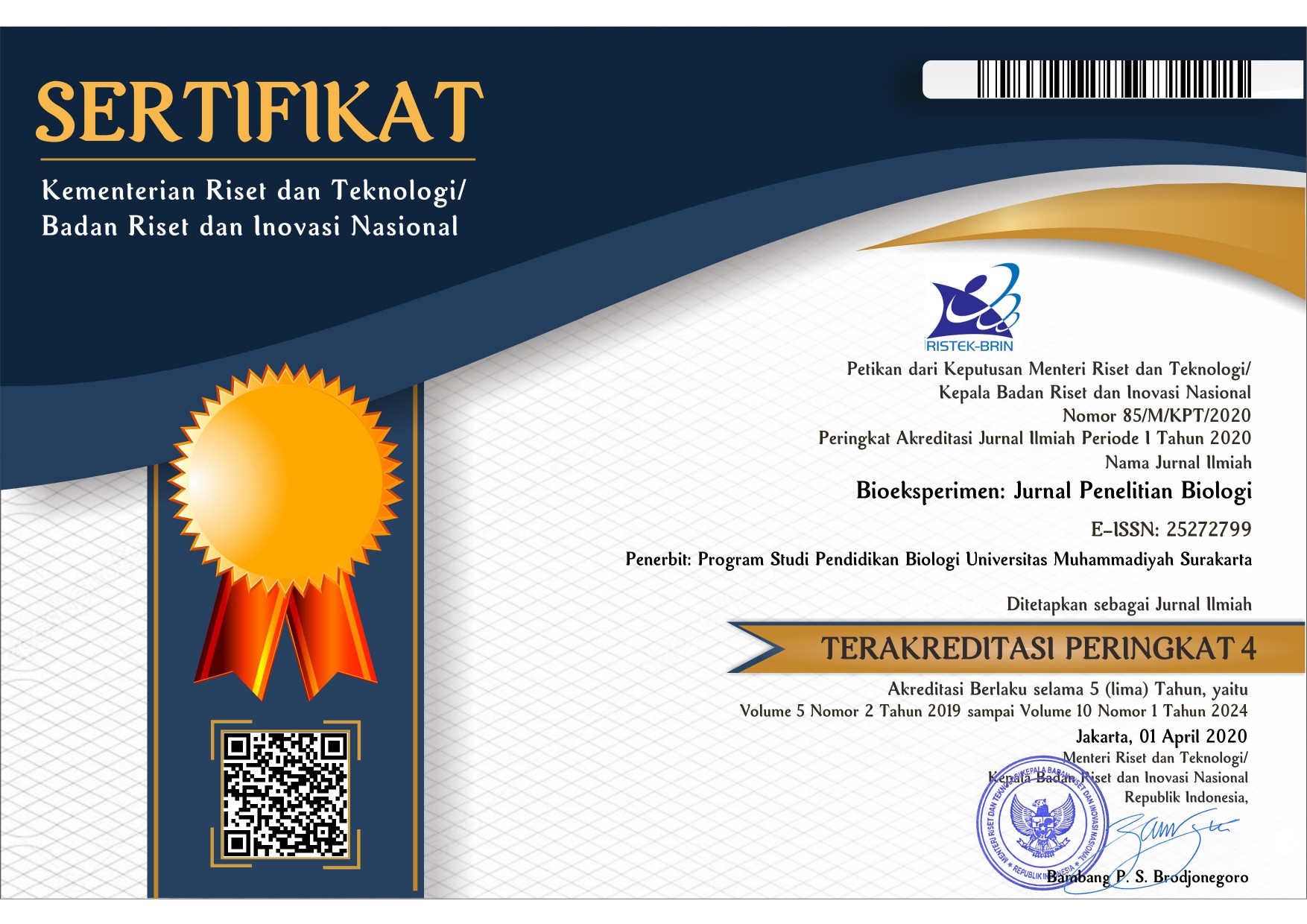Eosinofil Sel Penyaji Antigen
Safari Wahyu Jatmiko(1*)(1) Fakultas Kedokteran Universitas Muhammadiyah Surakarta
(*) Corresponding Author
Abstract
Keywords
Full Text:
PDFReferences
Akuthota, P., Melo, R.C.N., Spencer, L.A., and Weller, P.F., 2012, MHC Class II and CD9 in Human Eosinophils Localizeto Detergent-Resistant Membrane Microdomains, Am J Resp Cell Mol Biol,46:188-195
Akuthota, P., Wang, H.B., Spencer, L.A., and Weller, P.F., 2008, Immunoregulatory roles of eosinophils: a new look at a familiarcell, Clin Exp Allergy. 38(8): 1254–1263.
Akuthota, P., Wang, H., and Weller., P.F., 2010, Eosinophils as Antigen-Presenting Cells in Allergic Upper AirwayDisease, Curr Opin Allergy Clin Immunol. 10(1): 14–19.
Fujiwara, R.T., Canc¸ado, G.G.L., Freitas, P.A., Santiago, H.C., Massara, C.L.,Carvalho, O.S., Correˆa-Oliveira, R., Geiger, S.M., and Bethony, J., 2009, Necator americanus Infection: A Possible Cause ofAltered Dendritic Cell Differentiation and EosinophilProfile in Chronically Infected Individuals, Plos Neglected Trop Dis, 3(3):1-10
Garro, A.P., Chiapello, L.S., Baronetti, J.L., andMasih, D.T., 2010, Rat eosinophils stimulate the expansion of Cryptococcus neoformansspecificCD4+ and CD8+ T cells with a T-helper 1 profile, Immunol, 132:174–187
Garro, A.P., Chiapello, L.S., Baronetti, J.L., andMasih, D.T., 2011, Eosinophils elicit proliferation of naive and fungal-specific cellsin vivo so enhancing a T helper type 1 cytokine profile in favour of aprotective immune response against Cryptococcus neoformansinfection, Immunol, 134:198-213
Kvarnhammar, A.M., andCardell, L.O., 2012, Pattern-recognition receptors in human eosinophils, , Immunol, 136:11–20
Le-Carlson, M., Seki, S., Abarbanel, D., Quiros, A., Cox, K., and Nadeau, K.C., 2013, Markers of Antigen Presentation and Activation on Eosinophilsand T Cells in the Esophageal Tissue of Patients WithEosinophilic Esophagitis, J Pediatr Gastroenterol Nutr. 56(3): 257–262
Lin, T., Zhang, D, Lai, Q., Sun, M., Quan, W., and Zhou, K., 2014, A modified method to detect the phagocytic ability of eosinophilic and basophilic haemocytes in the oyster Crassostrea plicatula, Fish Shellfish Immunol, 40(1):337–343
Safari, W.J., dan Riandini, A., 2015, Imunitas Alamiah, edisi 1, cet 1, Surakarta:UNS Press, 18-65
Padigel, U.M., Hess, J.A., Lee, J.J., Lok, J.B., Nolan, T.J., Schad, G.A., and Abraham, D., 2007, Eosinophils Act as Antigen-Presenting Cells to Induce Immunityto Strongyloides stercoralis in Mice, J Infect Dis. 196(12): 1844–1851.
Padigel, U.M., Lee, J.J., Nolan, T.J., Schad, G.A., and Abraham, D., 2006, Eosinophils Can Function as Antigen-Presenting Cells To InducePrimary and Secondary Immune Responses toStrongyloides stercoralis, Infec Immun, 74(6):3232–3238
Wang,H.B., Ghiran, I., Matthaei, K., and Weller, P.F., 2007, Airway Eosinophils:Allergic Inflammation RecruitedProfessional Antigen-Presenting Cells, J Immunol,179:7585–7592.
Article Metrics
Abstract view(s): 4793 time(s)PDF: 5955 time(s)
Refbacks
- There are currently no refbacks.








